Espresso Machine Pressure Explained: Why 9 Bars Matters
Ever wondered why your espresso machine has a pressure gauge, or what '15 bar pressure' actually means? Understanding espresso machine pressure is the key to pulling perfect shots consistently. Let's break down this crucial aspect of espresso making in plain English.
I remember the first time I looked at an espresso machine's pressure gauge. The needle bouncing around meant absolutely nothing to me. Was 9 bars good? Why not 10 or 15? And what even is a "bar" anyway?
After years of pulling shots and geeking out over extraction theory, I've learned that pressure is arguably the most important variable in espresso making. Get it right, and you'll extract sweet, complex flavors. Get it wrong, and even the best coffee beans will taste flat or bitter.
This guide will walk you through everything about espresso machine pressure, from basic concepts to advanced techniques like pressure profiling. By the end, you'll know exactly what that gauge is telling you and how to use it to improve your espresso.
What is Bar Pressure?
Let's start with the basics. A "bar" is a unit of pressure. One bar equals the atmospheric pressure at sea level, which is about 14.5 PSI (pounds per square inch). Think of it as the normal air pressure you experience every day.
When we talk about espresso machine pressure, we're talking about how much force the machine uses to push hot water through tightly packed coffee grounds. The industry standard is 9 bars, which equals roughly 130 PSI. That's about the same pressure you'd find in a car tire.
Here's a helpful comparison to put espresso machine pressure in perspective:
Pressure Comparison
- 1 bar: Normal air pressure at sea level
- 1-2 bars: Moka pot or AeroPress (makes strong coffee, not true espresso)
- 9 bars: Espresso sweet spot (about 130 PSI)
- 15 bars: Pump pressure on many home machines (reduced to 9 at brew head)
- 30+ bars: Commercial car wash pressure washer
The key thing to understand is that espresso machine pressure isn't just about pushing water through coffee. It's about creating the right conditions for proper extraction, which is what makes espresso taste like espresso and not just strong coffee.
Why Espresso Needs Pressure
You might wonder why we can't just pour hot water over coffee grounds like regular drip coffee. The answer lies in what makes espresso unique: concentration, speed, and those beautiful oils we call crema.
Pressure does three critical things that gravity alone cannot:
Forces Water Through Fine Grounds
Espresso uses much finer grounds than drip coffee. Without pressure, water would just sit on top or trickle through way too slowly. Pressure forces water through this tight puck in 25-30 seconds, the ideal extraction time.
Extracts Coffee Oils
Coffee oils carry tons of flavor and aroma compounds. These oils are mostly insoluble in water at normal pressure. The high pressure of espresso emulsifies these oils into the water, creating that thick, syrupy body and the crema on top.
Creates Concentrated Flavor
Pressure allows us to extract maximum flavor from a small amount of coffee in minimal time. A double shot uses about 18g of coffee to produce 36g of liquid in 30 seconds. That's an incredibly concentrated extraction you can't achieve any other way.
Think of it like this: if espresso extraction was a highway, low pressure would be like trying to merge onto it at 20 mph. The right pressure (9 bars) is like merging at 65 mph, perfectly matching the flow. Too much pressure? That's like trying to merge at 100 mph and causing chaos.
The 9 Bar Standard: Where It Came From
The 9 bar pressure standard isn't arbitrary. It comes from decades of experimentation and science, dating back to the first modern espresso machines in mid-20th century Italy.
In the 1940s and 1950s, Italian engineers discovered that 9 bars created the perfect balance. Lower pressure couldn't extract enough oils and flavors. Higher pressure extracted too quickly, pulling bitter compounds and creating harsh flavors.
Here's what happens at different pressure levels:
Pressure Impact on Extraction
Under-extraction. The shot runs too slow or doesn't extract enough. You get sour, weak espresso with thin or no crema. The coffee tastes watery and acidic because water can't pull enough oils and sugars from the grounds.
The sweet spot. This range produces balanced espresso with good body, proper crema, and a harmonious flavor profile. Most quality machines aim for 9 bars, but anywhere in this range works well.
Over-extraction. Too much pressure forces water through too quickly, extracting bitter compounds. You get harsh, bitter espresso with weak crema. The coffee tastes burnt and astringent even with perfect beans.
It's worth noting that some modern machines experiment with variable pressure (called pressure profiling, which we'll cover later). But 9 bars remains the gold standard that produces consistently excellent results across different coffee types and roast levels.
Pump Pressure vs Brew Pressure: The Truth About "15 Bar" Machines
Here's where things get confusing. You've probably seen espresso machines advertised as "15 bar pressure" or even "19 bar pressure." If 9 bars is the sweet spot, why would you want more?
The short answer: you don't. Here's what's really going on.
Pump pressure is the maximum pressure the pump can generate. Brew pressure (also called brew head pressure) is the actual pressure hitting your coffee puck. These are two very different numbers.
How the Pressure System Works
1. The Pump: Most home machines use a vibratory pump rated at 15 bars. This doesn't mean your espresso sees 15 bars. It means the pump is capable of generating that much pressure.
2. The Over-Pressure Valve (OPV): This little valve is the secret. It's usually set to release excess pressure once it hits 9-10 bars at the brew head. So even though your pump can produce 15 bars, the OPV ensures only 9 bars actually reaches your coffee.
3. Pressure Loss: There's also natural pressure loss as water travels through the machine's plumbing, heat exchanger, and group head. Having extra pump capacity ensures you still get 9 bars where it matters.
Think of it like a car engine. A car might have a 150 mph top speed, but you're cruising at 65 mph. The extra power ensures smooth, consistent performance. Same principle with espresso pumps.
So when you see "15 bar pressure" in marketing, understand that's just pump capacity. What matters is the brew pressure, and any decent machine regulates that to around 9 bars.
Steam Pressure vs Pump Pressure
Here's another common confusion point: steam pressure versus pump pressure. They're completely different systems doing different jobs.
Pump pressure is what we've been discussing. It pushes hot water through coffee grounds at 9 bars to extract espresso.
Steam pressure is the pressure inside your machine's boiler, measured differently and used for steaming milk. Most home machines run steam pressure between 1.0 and 1.5 bars.
How Pump Pressure Works
- • Generated by electric pump (vibratory or rotary)
- • Operates only when pulling shots
- • Regulated by over-pressure valve
- • Target: 9 bars at brew head
- • Controlled by machine electronics or mechanical spring
How Steam Pressure Works
- • Generated by heating water in sealed boiler
- • Builds continuously when machine is on
- • Regulated by pressure stat or safety valve
- • Target: 1.0-1.5 bars for home machines
- • Higher on commercial machines (1.5-2.0 bars)
Why the huge difference? Espresso extraction needs high pressure for a short time. Steam production needs lower, sustained pressure to create dry steam for texturing milk.
If you try to steam milk with 9 bars of pressure, you'd blast the milk everywhere. If you tried to make espresso with 1.5 bars, you'd get weak, under-extracted coffee. Each system is optimized for its specific job.
On dual boiler machines, you have separate boilers maintaining different pressures simultaneously. On single boiler machines, you switch between brew mode (pump pressure) and steam mode (boiler pressure).
Over-Pressure Problems: When More Isn't Better
I've seen many beginners think higher pressure equals stronger, better espresso. Unfortunately, the opposite is true. Too much pressure creates a cascade of problems that ruin your shot.
Here's what happens when your machine runs above 10 bars at the brew head:
Channeling and Uneven Extraction
Excessive pressure finds weak spots in your coffee puck, creating channels where water rushes through without extracting anything. Meanwhile, other parts of the puck get over-extracted. You end up with simultaneously sour and bitter espresso.
Bitter, Harsh Flavor
High pressure extracts compounds you don't want. These bitter, astringent flavors normally stay in the coffee grounds. Too much pressure pulls them into your cup, creating harsh espresso that's unpleasant to drink even with milk and sugar.
Weak, Unstable Crema
Counter-intuitively, too much pressure actually reduces crema quality. The oils get blown apart rather than properly emulsified. You get thin, pale crema that disappears in seconds, or sometimes a foamy, bubbly mess rather than smooth crema.
Fast, Gushing Shots
Excessive pressure can force water through your puck too quickly, even if your grind is correct. You might see shots that should take 30 seconds finishing in 15-20 seconds, resulting in sour, under-extracted espresso despite the high pressure.
If you suspect over-pressure issues, many machines let you adjust the OPV. On machines like the Gaggia Classic Pro, this is a common modification. You can lower the pressure from the factory setting (often 12+ bars) down to the ideal 9 bars.
Under-Pressure Problems: The Other Extreme
Just as too much pressure causes problems, insufficient pressure leaves you with disappointing espresso that lacks everything that makes espresso special.
When your machine can't reach at least 7-8 bars at the brew head, you'll experience:
Slow, Dripping Shots
Without enough pressure, water can't push through the coffee puck efficiently. Your shot might take 45+ seconds or even just drip slowly. This extended contact time can lead to over-extraction despite the low pressure.
Sour, Weak Flavor
Low pressure can't extract enough oils, sugars, and soluble compounds from the coffee. You get thin, sour espresso that tastes more like strong drip coffee than true espresso. The body is watery and the complexity is missing.
Little or No Crema
Crema formation requires sufficient pressure to emulsify coffee oils. Below 7 bars, you might get a thin layer that disappears immediately, or no crema at all. This is one of the clearest signs your pressure is too low.
Temperature Loss
Slow extraction means more time for heat to dissipate. Your espresso comes out cooler than ideal, which affects both taste and aroma. Warm espresso doesn't release volatile compounds as effectively, muting the flavor.
Low pressure usually indicates a problem with your machine. The pump might be failing, there could be a blockage in the system, or the OPV might be set too low. Sometimes descaling the machine fixes pressure issues by removing mineral buildup that restricts water flow.
If you're experiencing consistent low pressure, it's worth checking your machine maintenance schedule. Regular cleaning and descaling prevent many pressure-related problems.
How Machines Achieve Pressure: Pump Types Explained
Understanding how your machine creates pressure helps you appreciate what's happening when you pull a shot. There are two main types of pumps in espresso machines, each with distinct characteristics.
Vibratory Pumps
Most home espresso machines use vibratory pumps. They work by using an electromagnetic coil that vibrates a piston back and forth about 60 times per second, pushing water through the system.
- Inexpensive to manufacture
- Compact and lightweight
- Good pressure for home use
- Easy to replace if they fail
- Noticeably noisy during operation
- Can pulse slightly affecting flow
- Shorter lifespan than rotary pumps
- Performance degrades over time
Rotary Pumps
Commercial machines and high-end home machines use rotary pumps. They work like tiny water wheels, using a motor to spin a gear that pushes water smoothly through the system.
- Very quiet operation
- Smooth, consistent pressure
- Long lifespan (10+ years)
- Better for high-volume use
- Much more expensive
- Larger and heavier
- Requires direct water line
- Overkill for most home users
For home users, vibratory pumps are perfectly adequate. They can maintain 9 bars consistently and last several years with normal use. The noise is the main downside, but you only hear it during extraction (25-30 seconds).
If you're pulling dozens of shots per day, a rotary pump makes sense. The smooth pressure delivery can improve shot consistency marginally. But honestly, the difference in cup quality between a good vibratory pump and a rotary pump is minimal for home use.
Pressure Profiling: Advanced Technique
Once you've mastered the basics of espresso making, you might hear about pressure profiling. This advanced technique varies the pressure during extraction to highlight different flavors.
Traditional espresso uses flat 9 bar pressure from start to finish. Pressure profiling changes the pressure throughout the shot. A typical profile might look like this:
Example Pressure Profile
0-8 seconds: Start at 3-4 bars (pre-infusion). This gently wets the coffee puck, allowing it to expand evenly and reducing channeling. The coffee begins extracting slowly, pulling delicate, sweet flavors.
8-20 seconds: Ramp up to 9 bars (main extraction). This is where you get the bulk of your espresso, extracting sugars, acids, and body. The pressure is high enough to create proper emulsification and crema.
20-30 seconds: Drop to 6-7 bars (declining pressure). As extraction finishes, lower pressure prevents over-extraction of bitter compounds while still pulling the last bit of sweetness.
Different profiles work better for different coffee types. Light roasts often benefit from longer pre-infusion at lower pressure. Dark roasts might do better with a more aggressive profile starting higher.
Here's the reality check: pressure profiling requires:
- • A machine capable of variable pressure (very expensive, or modified machines like modded Gaggia Classic)
- • Excellent technique with all other variables (grind, dose, distribution, tamping)
- • Lots of experimentation and wasted coffee learning different profiles
- • High-quality, fresh beans to appreciate the subtle differences
For most home baristas, mastering consistent 9 bar extraction will produce better results than fumbling with pressure profiling on an inconsistent baseline. Think of it like learning to drive. Master normal driving before attempting rally racing.
That said, if you're passionate about espresso and want to experiment, pressure profiling opens up new dimensions of flavor. Just make sure you've got the fundamentals locked down first.
Testing Your Machine's Pressure
Now that you understand what pressure should be, how do you know if your machine is actually delivering 9 bars? There are several methods, ranging from simple observation to precise measurement.
Method 1: Shot Timing and Observation
The simplest way to check pressure is by watching your shots. Here's what proper pressure looks like:
- • Espresso starts flowing within 5-8 seconds of pressing the button
- • Flow should look like warm honey, steady and consistent
- • A double shot (18g in, 36g out) takes 25-30 seconds total
- • Crema is thick, reddish-brown, and lasts 2-3 minutes
- • Espresso tastes balanced, sweet, and full-bodied
If all these boxes check, your pressure is probably in the right range. This method costs nothing and works for daily monitoring.
Method 2: Blind Basket Pressure Test
For more accuracy, you can use a portafilter pressure gauge. This screws into your portafilter basket and shows actual pressure.
How to do it:
- Purchase a blind basket pressure gauge (about $20-30)
- Install it in your portafilter (replaces the regular basket)
- Lock the portafilter into the group head
- Run the pump and watch the gauge
- It should read 8-10 bars (anything in this range is good)
This gives you a one-time accurate reading. Many enthusiasts use this to verify their machine's pressure or check after OPV adjustments.
Method 3: Install a Permanent Brew Head Gauge
For continuous monitoring, you can install a pressure gauge permanently on your machine. This shows real-time pressure during every shot.
Benefits:
- See pressure changes during extraction
- Spot problems immediately (pressure drops, spikes)
- Learn how grind size affects pressure
- Perfect for learning and troubleshooting
Downsides:
- Requires drilling into group head (on some machines)
- Can void warranty
- Costs $50-100 installed
- Not necessary for good espresso
Method 4: Professional Testing
If you suspect serious pressure problems and don't want to install anything yourself, take your machine to a repair shop. They can test pressure accurately and diagnose issues with pumps, valves, or other components. This costs $50-100 typically but gives you complete peace of mind.
For most home users, I recommend starting with Method 1. If your shots are consistently good, your pressure is fine. If you're troubleshooting issues or just curious, grab a blind basket gauge for Method 2. It's cheap, informative, and doesn't modify your machine.
Practical Tips for Managing Pressure
Now that you understand espresso machine pressure inside and out, here are some practical tips for getting the most out of your machine:
Quick Reference Guide
- Grind finer first (this is usually the issue)
- Increase dose slightly (try 19g instead of 18g)
- Check if pressure is too high (use gauge)
- Ensure proper tamping pressure (30 lbs)
- Grind coarser (most common fix)
- Decrease dose slightly
- Check for low pressure with gauge
- Ensure coffee isn't too fresh (let it rest 7-10 days)
- Improve puck preparation (even distribution, level tamp)
- Descale your machine (mineral buildup affects pressure)
- Check if pump is failing (especially on older machines)
- Verify OPV hasn't come loose or shifted
Remember that pressure is just one variable in espresso. Even with perfect pressure, you need good beans, proper grind size, correct dose, even distribution, consistent tamping, and the right temperature. Pressure gives you the foundation, but everything has to work together.
The good news? Once your machine's pressure is set correctly (and most machines are from the factory), you rarely need to think about it. Focus your energy on dialing in grind size and technique. Those variables change with every bag of beans while pressure stays constant.
Wrapping Up: Pressure in Perspective
Understanding espresso machine pressure transforms how you think about making espresso. That little gauge or pressure number isn't just marketing hype. It represents decades of refinement to find the sweet spot where water, coffee, and physics combine to create something special.
The key takeaways:
- 9 bars is the gold standard for a reason (balanced extraction, proper crema, great flavor)
- "15 bar pressure" in marketing refers to pump capacity, not brew pressure
- Too much or too little pressure both cause problems (bitter or sour espresso)
- Most machines maintain correct pressure automatically (you just need to verify occasionally)
- Pressure profiling is advanced and optional (master basics first)
Whether you're pulling shots on a budget machine or a high-end setup, understanding pressure helps you troubleshoot issues and appreciate what's happening in that 30-second window when magic occurs.
Now get out there and pull some shots. Pay attention to that pressure gauge if you have one. Watch how your espresso flows. Notice the crema. Taste the results. Understanding the theory is great, but there's no substitute for hands-on experience.
Frequently Asked Questions
What does 9 bar pressure mean for espresso?
9 bar pressure equals about 130 PSI, which is the ideal force to extract espresso oils, sugars, and flavors without over-extracting bitter compounds. This pressure creates the signature crema and balanced taste of quality espresso.
Is 15 bar or 9 bar better for espresso?
9 bar is better for actual espresso extraction. Machines advertised as 15 bar use an over-pressure valve (OPV) to reduce the pressure to 9 bars at the brew head. The higher pump pressure just ensures consistent 9 bar delivery.
What happens if espresso pressure is too high?
Too much pressure (over 10 bars) causes over-extraction, leading to bitter, harsh espresso with thin crema. It can also create channeling where water finds weak spots in the coffee puck, causing uneven extraction.
Can you make espresso without 9 bars of pressure?
While 9 bars is ideal, you can make espresso-style coffee between 7-10 bars. Below 7 bars results in under-extracted, weak coffee. Devices like AeroPress or Moka pots produce 1-2 bars, making strong coffee but not true espresso.
How do I know if my espresso machine has enough pressure?
Check if your shots pull in 25-30 seconds, produce thick crema, and taste balanced. For accuracy, use a portafilter pressure gauge or install a brew head gauge. Most home machines maintain 8-10 bars at the brew head.
What's the difference between pump pressure and brew pressure?
Pump pressure is the maximum pressure the pump can generate (usually 15 bars). Brew pressure is the actual pressure at the coffee puck (ideally 9 bars). The difference is regulated by an over-pressure valve.
Related Articles
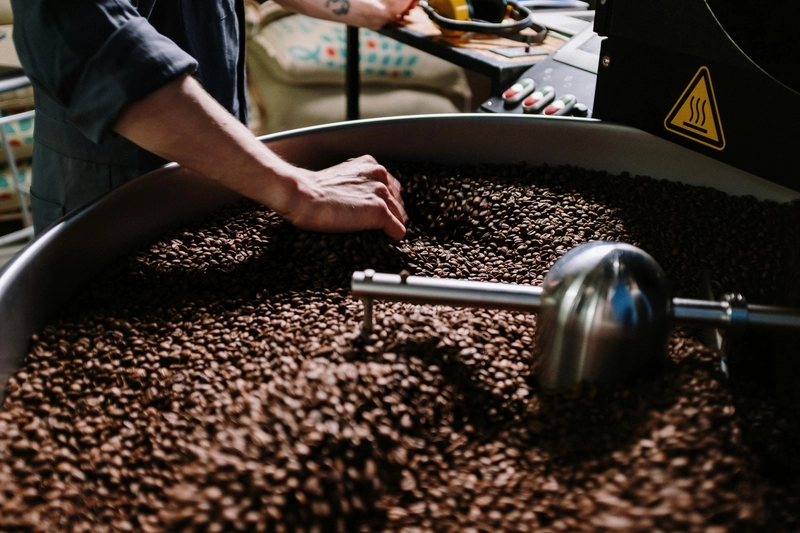
Top 10 Best Coffee Machines for 2025→
A comprehensive guide to the best coffee machines for every budget and need. Compare features, prices, and find the perfect machine for your home.
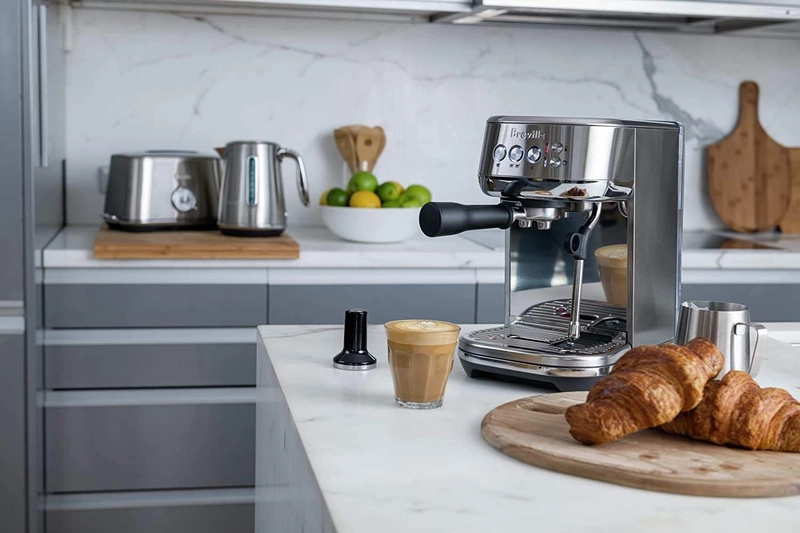
Breville Barista Express vs Pro: Which Should You Buy?→
A detailed comparison of the Breville Barista Express and Pro espresso machines. Explore features, performance, and value to find the best fit for your coffee needs.
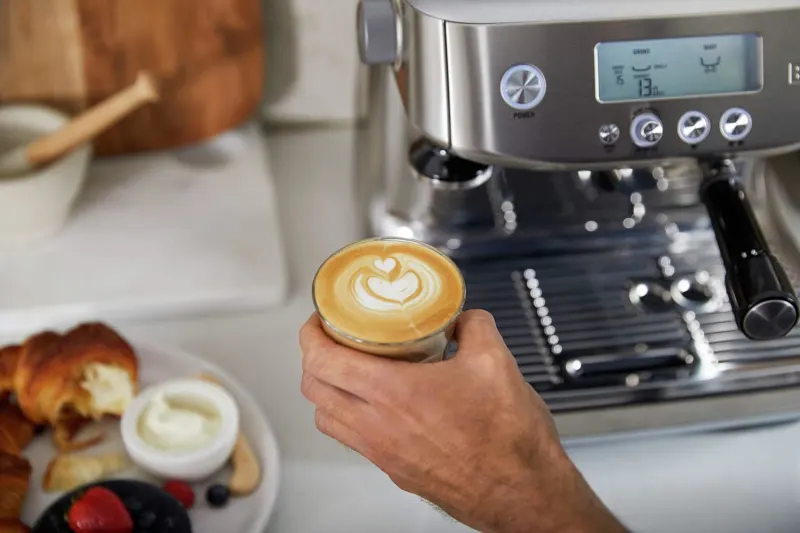
Breville vs De'Longhi: Which Makes Better Espresso?→
A comprehensive comparison of Breville and De'Longhi espresso machines. Explore features, performance, and find the best fit for your coffee needs.
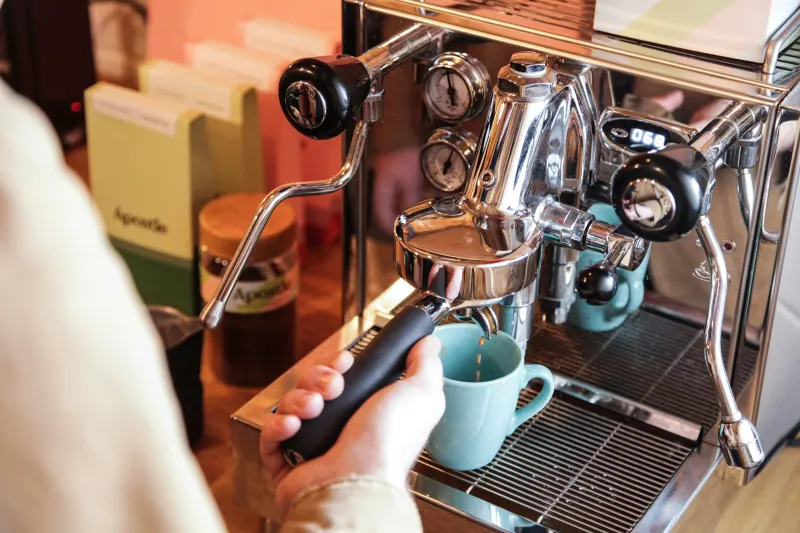
10 Best Espresso Machines Under $500 (2025 Guide)→
Expert reviews of the best espresso machines under $500, find your perfect machine with real testing results.
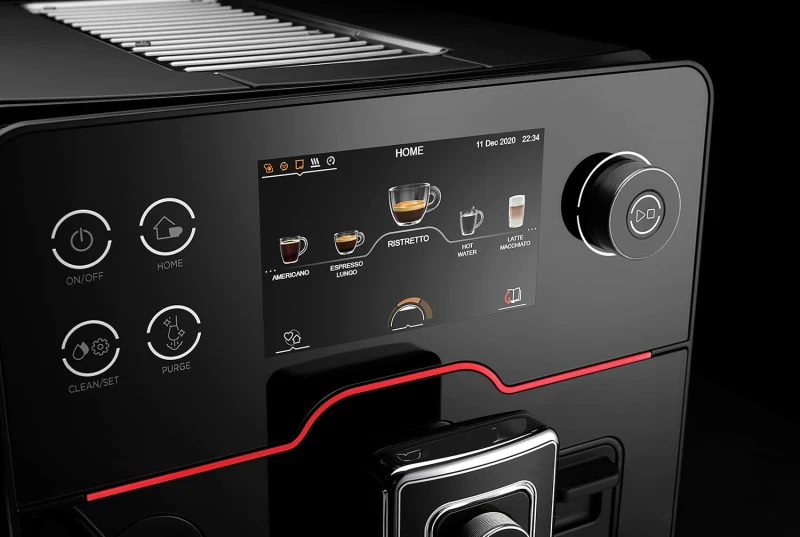
Breville vs Gaggia: Which Espresso Machine is Right for You?→
A detailed comparison of Breville and Gaggia espresso machines. Explore features, performance, and value to find the best fit for your coffee needs.
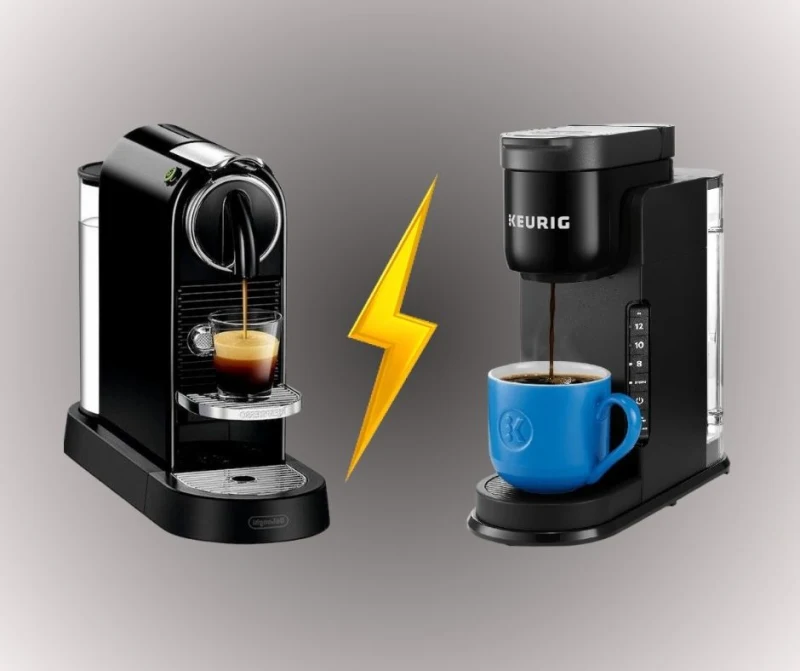
Nespresso vs Keurig: Which Pod System is Best?→
A comprehensive comparison of Nespresso and Keurig pod coffee systems. Explore features, coffee quality, and find the best fit for your lifestyle.

Emily Anderson
Coffee Expert & Former Barista
Emily has spent 8 years as a professional barista and coffee consultant, specializing in home espresso equipment.